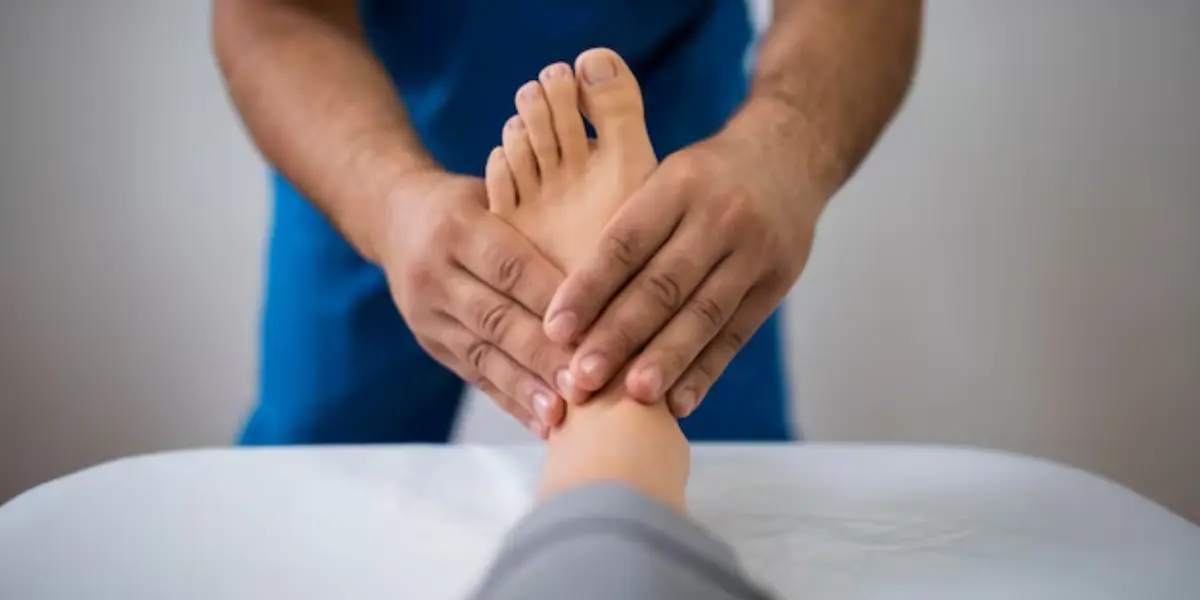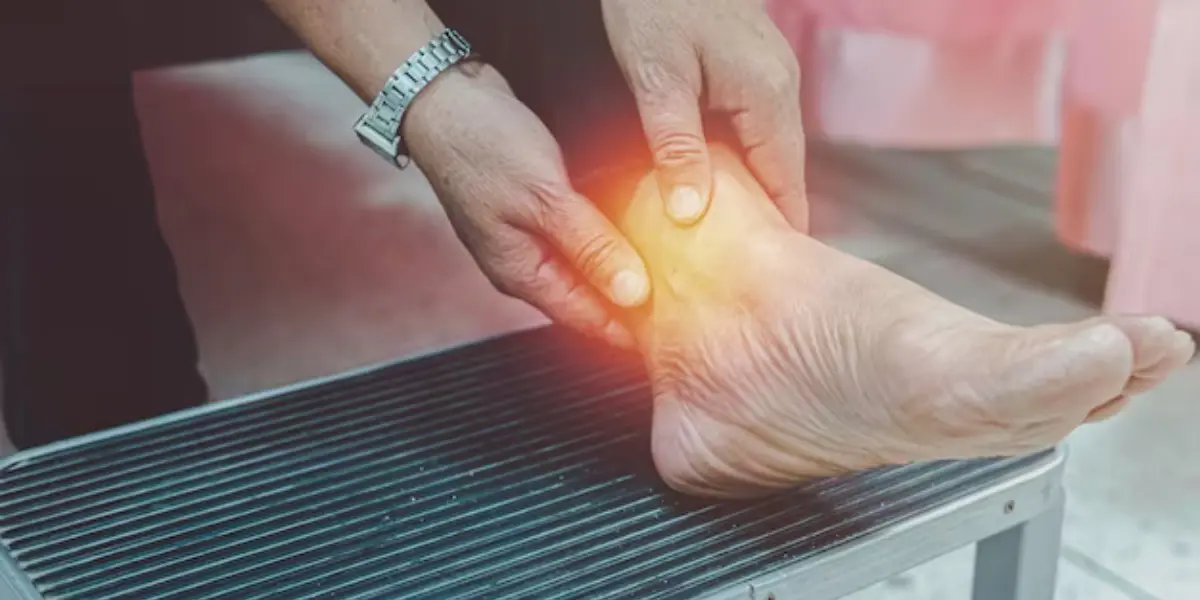Are you dealing with sudden pain and inflammation in your joints? Is it Gout?
Although Gout was considered a disease of the past, in the last three decades, it has impacted 53 million of the global population. In the United States alone, nearly 4% of the adult population is dealing with this condition. Gout is more commonly diagnosed in men, although this condition can hit women as well.
Here’s a detailed explanation of Gout, ranging from its causes and symptoms to diagnosis, treatment, and more.
What Is The Main Cause Of Gout? What Are The First Signs Of Having Gout?
Gout is a common yet complex and painful form of inflammatory arthritis. A medical condition in the traditional sense, Gout can be characterized by sudden pain and inflammation in one or multiple joints. As the condition flares up, redness and tenderness in different joints, especially in the big toes, ideally during the night time.

Gout can occur at any age, but this condition more commonly occurs during adulthood. Men typically develop this medical condition during their 40s or after, whereas women tend to develop it after menopause. However, Gout isn’t associated with the senior years of life and can also affect people in their 20s and 30s.
Causes Of Gout
Gout is an inflammatory medical condition commonly caused by ‘Hyperuricimena’. Elevated serum uric acid levels in the blood define this condition.
Usually, uric acid levels greater than 7 mg/dL (in men) and 6 mg/dL (in women) can result in Hyperuricimena, developing the pain and inflammation of Gout. As our body accumulates extra uric acid, it forms sharp crystals in the joints, leading to pain, swelling, and tenderness.
Some of the common causes of Gout and Uric Acid Built-up include the following:
- Excessive alcohol (beer and spirit) consumption.
- Excessive weight and obesity.
- Medical conditions like kidney disease, hypertension, and diabetes.
- Excessive consumption of certain seafood, red meat, organ meat, specific pulses, basically food rich in purines.
Signs And Symptoms Of Gout
- Sudden and frequent intense pain attacks in different joints, including fingers, wrist, knees, elbow, and especially big toe.
- Swollen, inflamed, and red joints. Due to swelling and inflammation, the joints may become tender when touched.
- A feeling of warmth at the impacted joints.
- Restricted moment due to immense pain and swelling.
- Lingering discomfort even when the pain has settled down.
Diagnosis And Tests Of Gout
Gout is a medical condition, and its diagnosis typically involves a range of physical assessments, blood tests, and scans. Here’s an overview of the same:
- Medical History Evaluation and Physical Examination: The doctor may ask you about your medical history, any previous symptoms, any form of arthritis, etc. The doctor will also ask you about pain, inflammation, and other symptoms (their frequency and range).
- Blood Tests: The doctor in charge may recommend blood tests for measuring uric acid levels. An increased uric acid level can indicate Gout; however, normal levels also can’t eliminate the possibility.
- Urine Test: Urine Test to rule out any abnormalities in kidneys.
- Joint Aspiration or Joint Fluid Analysis: In an unclear diagnosis until this stage, the doctor (ideally a rheumatologist) may recommend Joint Fluid Analysis. This test involves taking a fluid sample with a needle from the affected joint to identify the presence of urate crystals. The presence of these crystals confirms Gout.
- X-rays or Ultrasounds: X-rays confirm any joint damage, whereas Ultrasounds detect urate crystals. Both these imaging tests are usually performed between pain attacks.
Management And Treatment Of Gout
Upon receiving indications or confirmation about Gout, the rheumatologist in charge may recommend early treatment to prevent complications in the long term. Treating (and managing) Gout involves a combination of lifestyle and medication modifications. Here are all the details about the same:

Lifestyle Modifications:
- Individuals diagnosed with Gout have to limit or stop their alcohol intake (beer and spirit), or else it may elevate their uric acid levels.
- The doctor may also recommend limiting the intake of purine-rich food, including high-fructose corn syrup, organ meat, red meat, certain seafood, etc.
- Increasing hydration is vital as water helps flush out uric acid from the body through urine.
- Maintaining a healthy weight is crucial and may help reduce the frequency of attacks. Weight loss is also vital as individuals affected with Gout need to rest their affected joints from excessive weight/ pressure.
Medications:
The doctor in charge may recommend the following medications or their substitutes:
- Nonsteroidal anti-inflammatory drugs such as ibuprofen are used to reduce inflammation and pain during gout attacks.
- Corticosteroids are administered orally or as injections in the affected joints to reduce inflammation.
- Colchicine (anti-inflammatory medication) for pain relief.
- Allopurinol or febuxostat for reducing uric acid levels.
PLEASE NOTE: DO NOT take any medication recommendations from the internet and consult a healthcare professional for tailored treatment.
Prevention Of Gout

- Limit sugar intake (sweets and sugary drinks) to lower uric acid production.
- Eliminate beer and spirits from your routine.
- Limit or avoid consuming packaged food items with high fructose corn syrup.
- Limit intake of organ meat, including kidney, brain, liver, etc.
- Avoid seafood, particularly tuna, haddock, trout, scallops, herring, mussels, and codfish.
- Avoid game meat, particularly veal, goose, and venison.
- Limit red meat consumption, including bacon, pork, beef and lamb.
- Avoid consuming deli turkey.
- Drink 8 to 9 glasses of water every day.
- Urinate every time you feel the need to.
- Achieve and maintain a healthy weight as per your BMI.
- Be mindful of any factors that can trigger pain and inflammation.
Also Read: Heart Attacks: Overview, Types, Symptoms, Causes And Risk Factors
Sum Up
Gout can be painful; however, it isn’t the end since the condition is treatable and manageable. People worldwide are leading a normal life with Gout with limited flare-ups. The earlier you address the symptoms and reach a doctor, the better you can assess the situation. So don’t wait, and do not let the pain and inflammation worsen.
Besides medicinal help, include a healthy (Gout-friendly diet), restorative sleep, and physical activities into your routine.
References:
- Arthritis Foundation. Gout (https://www.arthritis.org/diseases/gout). Accessed 02/19/2023.
- U.S. National Institute of Arthritis and Musculoskeletal and Skin Diseases. Gout (https://www.niams.nih.gov/health-topics/gout). Accessed 02/19/2023.
- U.S. National Library of Medicine. Gout (https://medlineplus.gov/ency/article/000422.htm). Accessed 02/19/2023.